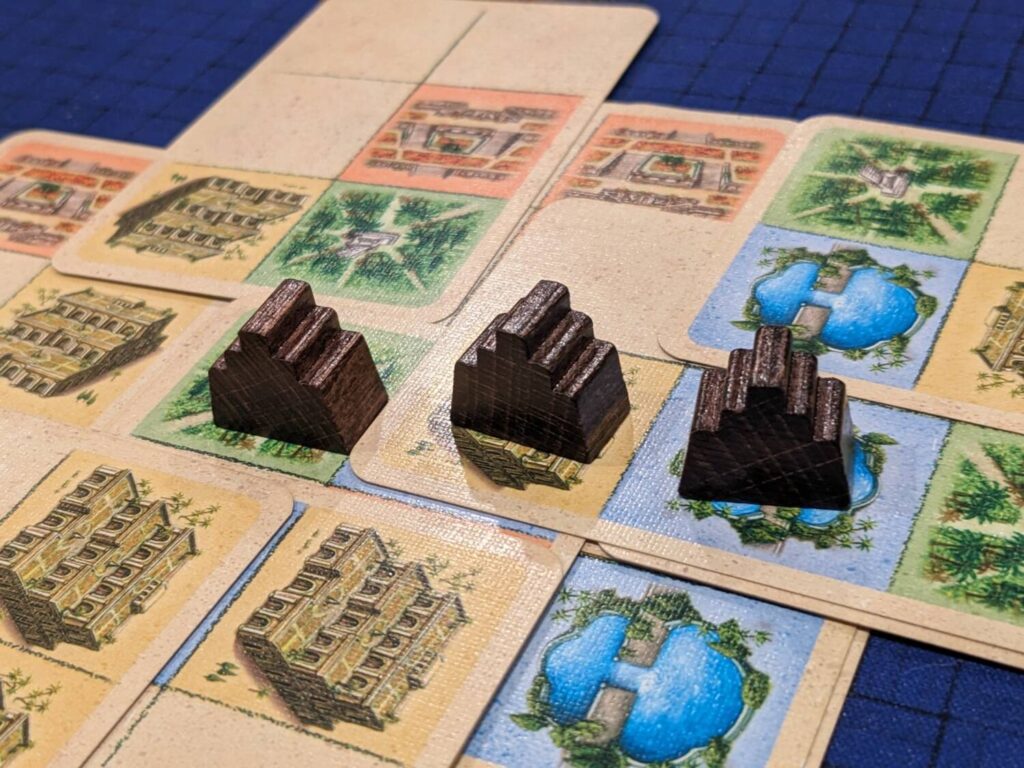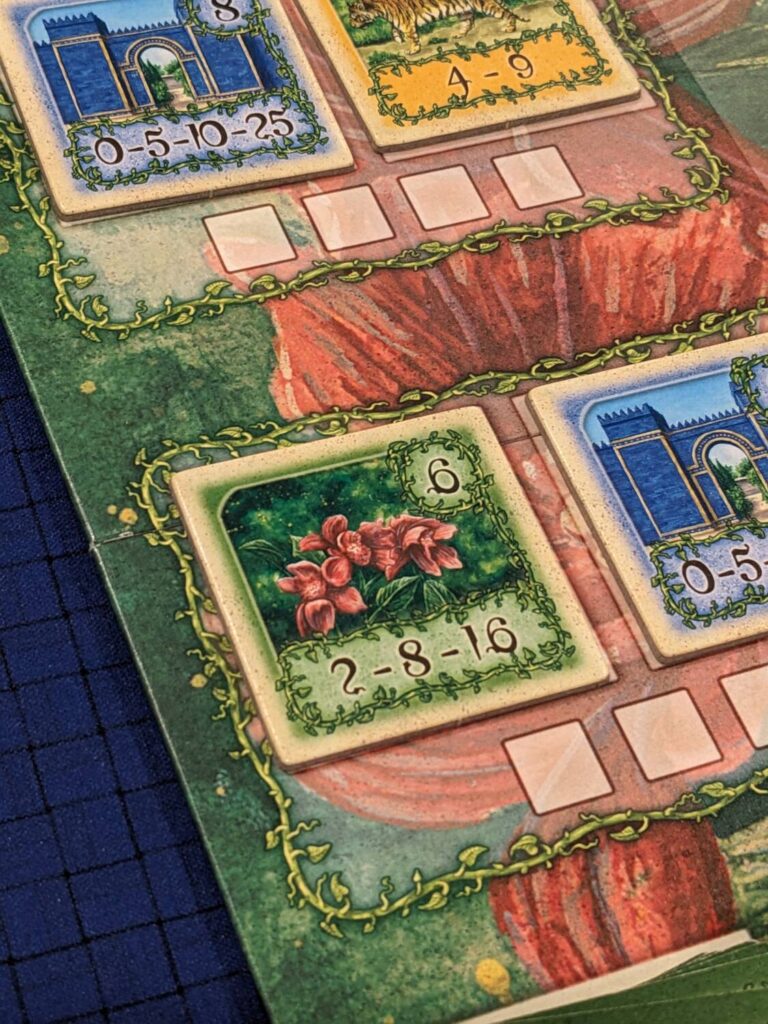The guys in my Wednesday gaming group started a push to play more of the old, dust-ridden games at the bottom and backs of our respective game closet shelves. The premise was simple: let’s try to remember why we keep all these old games when all we ever play now are the newest, shiniest things in shrink.
Right on the spot, the Dusty Euro Series was born, and I’ve enlisted multiple game groups to help me lead the charge on covering older games.
In order to share some of these experiences, I’ll be writing a piece from time to time about a game that is at least 10 years old that we haven’t already reviewed here at Meeple Mountain. In that way, these articles are not reviews. These pieces will not include a detailed rules explanation or a broad introduction to each game. All you get is what you need: my brief thoughts on what I think about each game right now, based on one or two fresh plays.

The Hanging Gardens: What Is It?
The Hanging Gardens is a 2-4 player card laying game that can best be described as a card splaying game. Cards representing various buildings and gardens have to be laid in a particular way that satisfies the game’s core rules—everything has to be “built” on something else, either sand (plain beige on one of the game’s cards) or previously played cards.
In this way, The Hanging Gardens gave me “that Honshu feeling”, as I referred to it during my play with my friends Beth and John at a recent game night. By that, I mean everyone is doing their best to construct legal placements by laying a card on top of at least two squares of the existing tableau in their play space, much like the 2016 card splaying game Honshu. Each card in The Hanging Gardens is broken into six sections, with some sections featuring nothing/sand, and others featuring fountains, plants, buildings, etc. None of the cards has more than three occupied spaces.
So, there’s a spatial element to The Hanging Gardens that I loved. Gameplay is simple—once a player has connected at least three, and as many as six, identical structure types in their card tableau, they drop one of their tokens on the connected series of identical buildings to collect a tile from a public scoring market of other tiles. A handsome bonus arrives if you are able to connect six matching squares in a row: a face-down tile from the draw deck, as well as any one face-up tile from the six in the market.
At the end of The Hanging Gardens, all that matters are the tiles. Each tile set scores 0-25 points on its own, which can be boosted with other scoring tiles. In our single game, scores ranged from the high 30s to the high 50s.

I Love It
I love Honshu, so the simple turns and straightforward scoring already had me hooked. But distilling the card placement to a simple set collection element made me like The Hanging Gardens even more.
A thought occurred to me during the teach of The Hanging Gardens. What if, for a single year, we forced all game designers to only produce games that can be learned from a single, double-sided sheet with all the rules? I think lots of designers would simply skip making games in that year, because it is apparently a challenge to make a fun game with such a short list of rules.
The Hanging Gardens doesn’t need much to get going, and the game still shows off nice depth for something that is 15+ years old. I could see this being a great filler for groups looking to kick off a night of tile placement games or anything with more complex spatial elements such as Clinic: Deluxe Edition or Ark Nova. Even after my first game of The Hanging Gardens, I could see lots of ways to plan around grabbing the scoring sets that feature low scores early, in the hopes of grabbing enough tiles over the course of play to end up in that 20-25 point range for the best tile sets.
The way that building cards are drafted also worked well. On each turn, there are a number of cards laid out equal to the number of players. Going last has that nice Kingdomino draft feel, where there’s only one card left and I just have to fit it into my tableau somewhere. Our three-player game took about 30 minutes, mainly because I was the one taking longer turns as I tried to grok the rules and the scoring condition.
The Hanging Gardens was a great surprise…if anything, I think I need to pick up a used copy of Honshu so that I have a couple of these card splaying games in my collection!











Add Comment